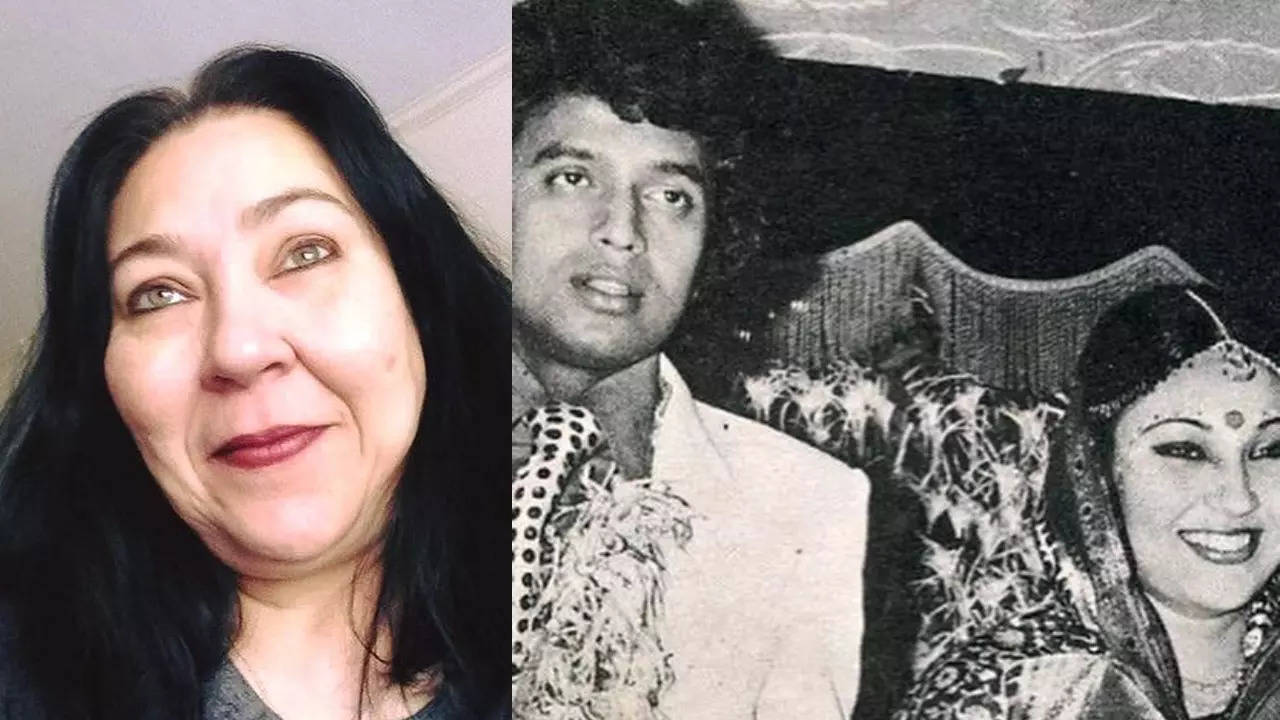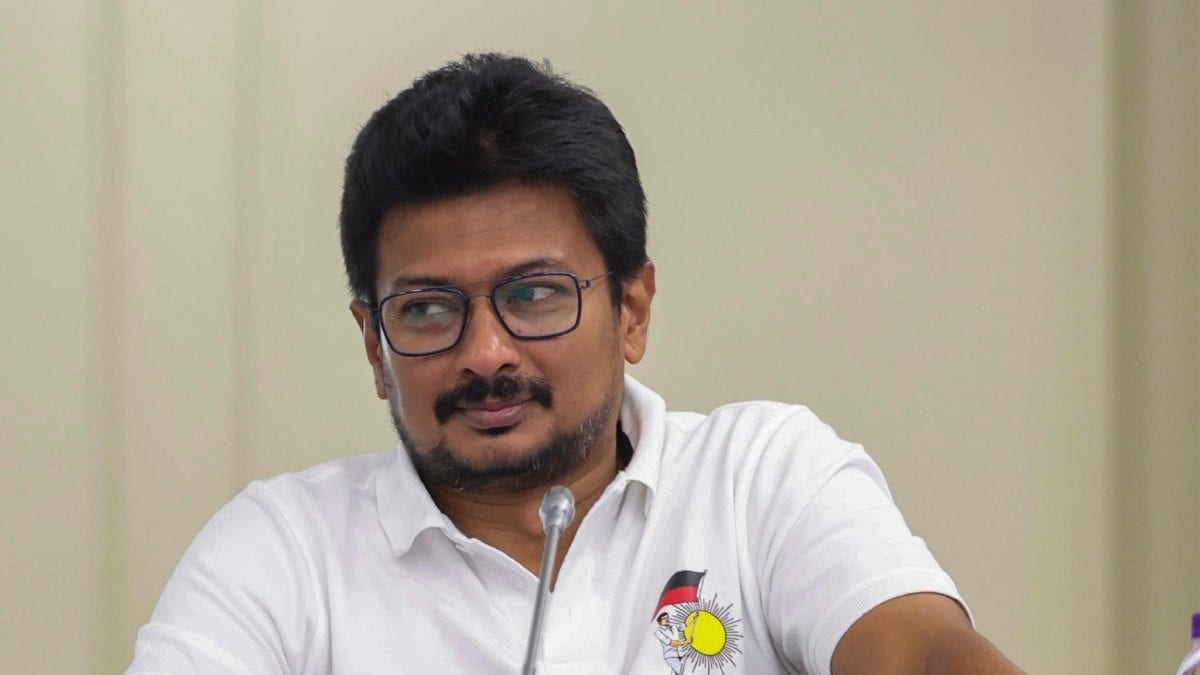First things first, this is not an attempt to push the ongoing “Malayalam cinema supremacy!” campaign any further. This is more of an effort to comprehend why people keep gravitating toward it like bees to honey instead of its colossal Hindi counterpart. Even as Bollywood, one of the largest film businesses in the world, is going through a rough patch, its regional compeers, especially Malayalam, are faring comparatively better, although the pandemic and back-to-back lockdowns cast a long shadow on all industries alike. While even the most-anticipated big-budget Bollywood films are turning box-office bombs, Malayalam cinema is coming up with both massive and small-scale films and scripting history. The recent successes of Bheeshma Parvam, Hridayam, Jana Gana Mana, Bro Daddy, Nna Thaan Case Kodu, and Thallumaala indicate the same. However, making assumptions based solely on box office performance would be unjust given that a Bollywood movie costs significantly more to produce than a Malayalam movie. While the most expensive Malayalam film to date is Priyadarshan’s Marakkar: Arabikadalinte Simham (2021) with a budget of Rs 100 crore, Kabir Khan’s 83, released the same year, was made for over Rs 250 crore. Even then, 83 was not the most expensive Bollywood film of all time – which underlines the disparity. However, it cannot be denied that Bollywood and its predictable style of filmmaking irritate the viewers. The abomination has progressed to the point where even celebrities find it difficult to win over their followers. The recent setbacks faced by Aamir Khan, Akshay Kumar, Ranbir Kapoor, and many others point to the need for Bollywood to undergo a significant transformation. Having said that, it has to be mentioned here that Malayalam cinema too is facing a crippling crisis with a massive number of films flopping at the box office. The Kerala Film Chamber of Commerce (KFCC), in July, stated that only seven out of 77 films that released this year (till that point) made profits. These numbers are undoubtedly scary for a field that has been battling to get back to normal. It is clear that the poor quality of films is not the only cause of this; the film business has also been impacted by the dismal economy. However, with people returning to cine halls and the OTT boom, it seems there is still a ray of hope for the visual art to get back on its feet. But for this to happen, it is inevitable that Bollywood too breaks itself free from the dry spell as it is a huge industry that employs hundreds of people. Nonetheless, a glimpse at the kind of films Bollywood made recently might make one feel that the industry is constantly looking for free rides. Bollywood is failing to address the underlying roots of the issue and is moving further away from success by attempting to generate quick money through tried-and-true methods. Wait, but what does Bollywood lack? What is helping the mainstream Malayalam industry wade through troubled waters? Let’s check out… (The factors listed below are not unique to the Malayalam film industry alone. In fact, several regional industries possess more or less the same qualities, which are succouring them in these trying times.) Rootedness It may have been years or even decades since mainstream Hindi cinema forgot this term. Don’t get me wrong. By rootedness, I don’t mean realism alone. But there’s a reason why movies such as Bachchhan Paandey, Shamshera, Satyameva Jayate 2 and Heropanti 2 flopped and even mediocre Malayalam flicks like Hridayam and Bro Daddy worked. Notably, even a superhero film like Basil Joseph’s Minnal Murali has a higher relatability rating than extravagant Bollywood productions. The complete absence of relatability and rootedness in films has indeed created a rift between moviegoers and Bollywood. Crammed with stories/incidents and characters that do not reflect even a single aspect of the day-to-day lives or the emotional spectrum of commoners, these films are merely copies of copies of copies. Though the industry did produce works like Ramprasad Ki Tehrvi, Tribhanga, Toolsidas Junior and Sherni during this period, it seems as if Bollywood is perpetually on the move to make something along the lines of flicks like Radhe: Your Most Wanted Bhai, despite the flak such movies have been receiving. Not that people have grown tired of mass movies. The pan-India recognition Lokesh Kanagaraj’s Vikram, SS Rajamouli’s RRR, Sukumar’s Pushpa: The Rise, Prashanth Neel’s KGF: Chapter 2, and Amal Neerad’s Bheeshma Parvam received underline the same. But yes, they are fed up with humdrum pulp fictions. To put it the Bollywood way, its fans feel like they have hit a dead end and that to choose regional films over mainstream Hindi cinema would mean “dal chawal for pachaas saal till you die”. Though mass action dramas with extravagant characters might work now and then like Rohit Shetty’s Sooryavanshi did, as the times are a-changin’, Bollywood filmmakers and producers should realise that this formula is no longer a gravy train and that people are rooting to listen to and watch new stories. Additionally, Malayalam cinema has long taken advantage of rootedness. It can be viewed as both an industry speciality and a commercial strategy employed by its filmmakers. They are aware that including a touch of life gives artworks a more universal appeal. The recognition movies like Drishyam 2, Aarkkariyam, Joji, Sara’s, Home, and Pada received from various parts of the country justifies this point. While we’re on the subject of relatability, it’s vital to talk about another issue that Bollywood has been criticised for a very long time but hasn’t quite been able to correct: the glorifying of unrealistic beauty standards. The industry needs to tone it down immediately. Yes, there are a number of individuals who are racist, colourist, and body shame others. But for how much longer will Bollywood keep promoting the same “Lak 28 kudi da. 47 weight kudi da” twaddle in virtually every film under the pretext that “this is what people want”? Sorry to bust your fantasy, but we prefer to see in films people who resemble us in some way. And the only reason we keep watching actors who spend more time working on their appearance than honing their acting skills is because you don’t have anything fresh to provide. The world has moved on to a point where actors like Fahadh Faasil, Nimisha Sajayan, Kunchacko Boban, Kani Kusruti and Nithya Menen are receiving reverence for both their acting prowess and the way they embrace their natural beauty. By turning a blind eye to this, Bollywood is only separating itself from reality. Original content matters Just think about it, according to reports, Bollywood has already announced at least 15 projects that are remakes of south Indian films. 15! This includes remakes of Vikram Vedha, Anniyan, The Great Indian Kitchen, Ala Vaikunthapurramuloo, Helen, and Kaithi. This is despite the several remakes/official adaptations that already came out this year, including Jersey, Laal Singh Chaddha, Looop Lapeta, Cuttputlli, Operation Romeo, Nikamma, Forensic, HIT: The First Case, Good Luck Jerry and Dobaaraa. Apart from remakes, Bollywood has announced a slew of biopics as well. Not that remaking or making biopics are sinful. Any well-crafted work is worthwhile. But people can only take so much at once. Especially since all these flicks had international theatrical releases and are now accessible on OTT platforms, remaking them is superfluous. Even if the industry did, if the only box office successes it can produce are remakes of other movies, Bollywood seriously needs to think about employing fresh talents or reinventing itself. At the same time, Malayalam cinema is coming up with new content every Friday. Though not all of them are great, the attempts, however, deserve appreciation. And amid all its flaws, movies like Operation Java, Nayattu, Puzhu, Dear Friend and Malayankunju proved that the audience will give their time and money if a film has something new to offer. Speaking of original content, Bollywood should also realise that it has the potential to go beyond big-budget action/romantic dramas. It is dreadful that a prodigious industry like Bollywood is not willing to play around with genres, while its Malayalam peer is doing it surprisingly well amid all the constraints. Not that Bollywood did not make any attempts post the pandemic. But such films that shook things up genre-wise were either crummy or were overshadowed by ginormous productions. Another reason could be that the industry glossed over such movies and failed to market them well, as a result of which these works went unnoticed. At the same time, in the past one and a half years, the Malayalam industry produced a science fiction horror like Churuli, psychological horror like Bhoothakaalam, political thriller like Mālik, neo-noir psychological thriller like Naaradan, police drama like Kuttavum Shikshayum, courtroom drama like Vaashi, fantasy comedy like Mahaveeryar, survival thriller like Malayankunju, and a political satire like Nna Thaan Case Kodu. With the help of adequate promotions, all these films performed well financially and most of them went on to become talking points. The director, not the producer, is the Captain Bollywood producers and production houses need to take a step back and let directors headline films, period! Though producers deserve as much respect as directors do, Bollywood has this custom of placing the former above the latter, which, in my opinion, has been affecting the quality of films. By forcing films, which come their way, to fit into their brand’s mould, Bollywood producers and production houses are indeed compromising on quality. Large production companies must understand that not all films must be big-budget productions and that even if they spent millions on a picture, the public won’t accept it if it is subpar. Shakun Batra’s Gehraiyaan can be taken into consideration to understand this. Even with a theme that was so universal and would have worked in any socio-economic background, the makers went the Dharma way and made it with, as per reports, almost Rs 70 crore. Despite the film’s success, it got harsh criticism for its screenplay, which led some to speculate that the creators paid too much attention to the film’s aesthetic elements. At the same time, even though Jeethu Joseph’s Drishyam 2, produced by Antony Perumbavoor through Aashirvad Cinemas, one of the biggest production houses in Kerala, came with a huge baggage of expectations as the first part of the movie was a major hit, the makers did not go overboard in any way and instead followed the same tactic that they used last time – have a watertight script and execute it in the most honest way possible. They kept the work small by understanding the story’s requirements, which helped it receive just as much appreciation as the first part did. The story is the same when it comes to Bollywood’s male superstars as well. A look at the films of Akshay Kumar, Aamir Khan, Salman Khan and Ajay Devgn to younger stars like Ranbir Kapoor, Kartik Aaryan and Tiger Shroff shows that most of them, in one way or the other, embody the same set of ingredients that worked for these stars once, irrespective of who the director is. Although many suggest that this is due to directors not using actors to their best potential, I believe the issue is that actors don’t step outside of their comfort zones. In the meantime, directors are currently playing a significant leadership role in the Malayalam cinema industry. Names like Rajeev Ravi, Dileesh Pothan, Lijo Jose Pellissery, Geetu Mohandas, Jeethu Joseph, Anjali Menon, Aashiq Abu, Khalid Rahman, Zakariya Mohammed and Mahesh Narayanan have already become hallmarks of excellence. The audience has reached a point wherein they decide whether to watch a movie or not solely based on who the director is. This has effectively helped the industry produce better content and push the directors to ensure that their products are dandy. Even superstars here are keeping up with the times and searching for fresh talents. Mammootty’s Puzhu, directed by debutant Ratheena, clearly shows how a director can bring out the best in an actor if the latter is free of inhibitions and lets the director do their job. Art can NEVER be separated from politics According to The Irish Times, renowned Mexican actor Gael Garca Bernal once observed, “You can’t separate art from politics. Art doesn’t happen in isolation. Every movie or piece of art takes a political stance. And when it doesn’t take a political stance, that’s a political stance, too.” There isn’t a simpler way to describe this, in my opinion. Cinema is not just for entertainment, no form of art is. Art has the potential to educate, uplift, soothe, and provoke the audience, apart from entertaining them. Film industries cannot ignore the public outcry in the face of the myriad social, economic and political problems the nation is facing. One of the main reasons why a large portion of the audience, particularly young people, have given up on Bollywood and are now paying attention to regional industries is the film industry’s obvious disregard for the political and social instability in the nation. Since Bollywood is still run by a clique of upper-caste/ultra-privileged families who have accumulated all the power, the filmmakers are compelled to adhere to a pattern that is entirely unaware of our surroundings. To quote Edith from Enola Holmes, “Politics doesn’t interest you because you have no interest in changing a world that suits you so well.” Touché. Bollywood movies from the years 2021 and 2022 will show that majority of the films the industry touted as “political” were just biopics of politicians and/or eminent personalities – Madam Chief Minister, Main Mulayam Singh Yadav, Thalaivii, and Rocketry: The Nambi Effect. Then there is Vivek Agnihotri’s The Kashmir Files. Even though Gangubai Kathiawadi can be considered a (semi) political film for its representation of those living in the red-light area of Kamathipura and Ganga Harjeevandas Kathiawadi herself, who is known to have lobbied for the rights of commercial sex workers, Bollywood bigwigs invoke this title only to claim that “Alia Bhatt is the best actor in the country” and not to discuss the content of the movie. It is at a time like this that the Malayalam industry came forward with films like Pada, Nayattu, Malik, The Great Indian Kitchen, Sara’s, Kuruthi, Archana 31 Not Out, Jana Gana Mana, and Puzhu that discussed socially and politically relevant topics such as caste and gender discrimination, why one shouldn’t blindly support extrajudicial killings, women’s reproductive rights, the politics of marriage, and so forth. Though not all movies got the politics completely right, while a few failed to ensure that the technical aspects matched up to the quality of the contents, prompting the act of discussing politics is crucial in the current era. However, it must be noted that the Malayalam film industry, when compared to its Tamil counterpart, also has a long way to go in terms of producing movies that address caste discrimination in a more honest and incisive manner and thereby document the lives of the marginalised, like Mari Selvaraj’s Karnan did. Get up, stand up. Stand up for your right The discussion will be incomplete without addressing one more point – the boycott campaigns. Contrary to common perception/belief, I feel that the boycott attempts have had little to no effect on Bollywood thus far. The reason being some of the major flops the industry witnessed this year featured Akshay Kumar, the poster boy for Hindutva, and Kangana Ranaut, the queen piece in Sangh Parivar’s game to attack Bollywood constantly. If the right-wing social media handles and bots had that much clout, Ranaut’s Dhaakad would not have become one of the biggest disasters of all time by earning a lifetime of just Rs 2.58 crore at the box office as against its estimated budget of Rs 85 crore. Meanwhile, Kumar’s last four films were panned by both critics and the audience and three of them (Bachchhan Paandey, Samrat Prithviraj, and Raksha Bandhan) were box office bombs. However, this does not imply that the hate campaigns will never be successful. The hate-mongering will continue as long as the industry keeps quiet, and it will eventually reach a point beyond repair, especially because the attack is receiving enough internal backing from figures like Vivek Agnihotri and Anupam Kher. It is appalling that a comparatively smaller star like Arjun Kapoor was the only person who dared to address and denounce the hate campaigns. To reiterate what I said earlier, politics and art are inseparable. Art has always been a weapon for resistance as well. Cinema and those associated with it too have taken part in resistance movements. Decades back, during the 21st Cannes Film Festival, the May 68 movement was at its height in France, with student demonstrations and widespread labour strikes. At that time, several film figures like Jean-Luc Godard, Francois Truffaut, Claude Lelouch, Louis Malle, Geraldine Chaplin, and Carlos Saura came forward in support of the people who were fighting for their rights. Demanding that the festival be stopped, Godard famously said: “We’re talking solidarity with students and workers and you’re talking about dolly shots and close-ups. You’re as*h*les.” Thus, the festival was curtailed for the first time in its history. Cut to: October 1986, Mumbai. Hundreds of people associated with the Hindi film industry, including superstars, took to the streets to protest against the imposition of heavy taxes on film tickets. From veterans like Dilip Kumar, Raj Kapoor, Vinod Khanna, and Sunil Dutt, to Smita Patil, Dharmendra, Anil Kapoor, Rakesh Roshan and Hema Malini were part of the strike which went on to become one of the biggest labour strikes in the history of Independent India. Cut to: November 2017, Kerala. Following the Malayalam actress assault case, a group of women working in the regional industry established an organisation to draw attention to the gender inequality they experience. Prominent figures including Manju Warrier, Parvathy, Rima Kallingal, Anjali Menon, Geethu Mohandas, Vidhu Vincent, Remya Nambeesan, Didi Damodaran and Surabhi Lakshmi were at the forefront of the campaign. Since then, their Women in Cinema Collective (WCC) has always been a strong voice in the industry that was till then single-handedly ruled by a big group of male superstars and technicians via organisations such as the Association of Malayalam Movie Artists (acronymed ironically as AMMA, which translates to ‘mother’ in Malayalam) and Film Employees Federation of Kerala (FEFKA). True, times have changed, and the environment is quite hostile now. But, Bollywood has to realise that silence is not the solution to this. It ought to band together and oppose the forces working to undermine it from both inside and outside the sector. To quote Martin Luther King Jr., “We must learn that passively to accept an unjust system is to cooperate with that system, and thereby to become a participant in its evil.” Apart from a small handful of right-wingers, a sizable portion of the nation’s moviegoers are impatiently awaiting Bollywood’s turnaround. Just that the industry needs to understand it can no longer take the audience for granted and that the only way Bollywood can win back the people’s hearts is by going above and beyond to serve them the best dishes possible, given the abundance of excellent works already readily available to them. All said and done, let’s wait and see how Bollywood recuperates and hope that it makes a majestic comeback. Kyunki, picture abhi baaki hai.
Subscribe
Login
0 Comments





